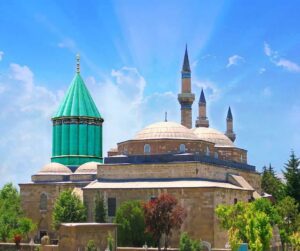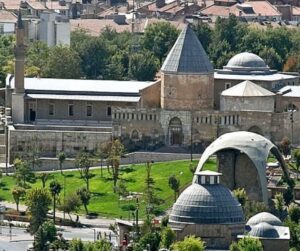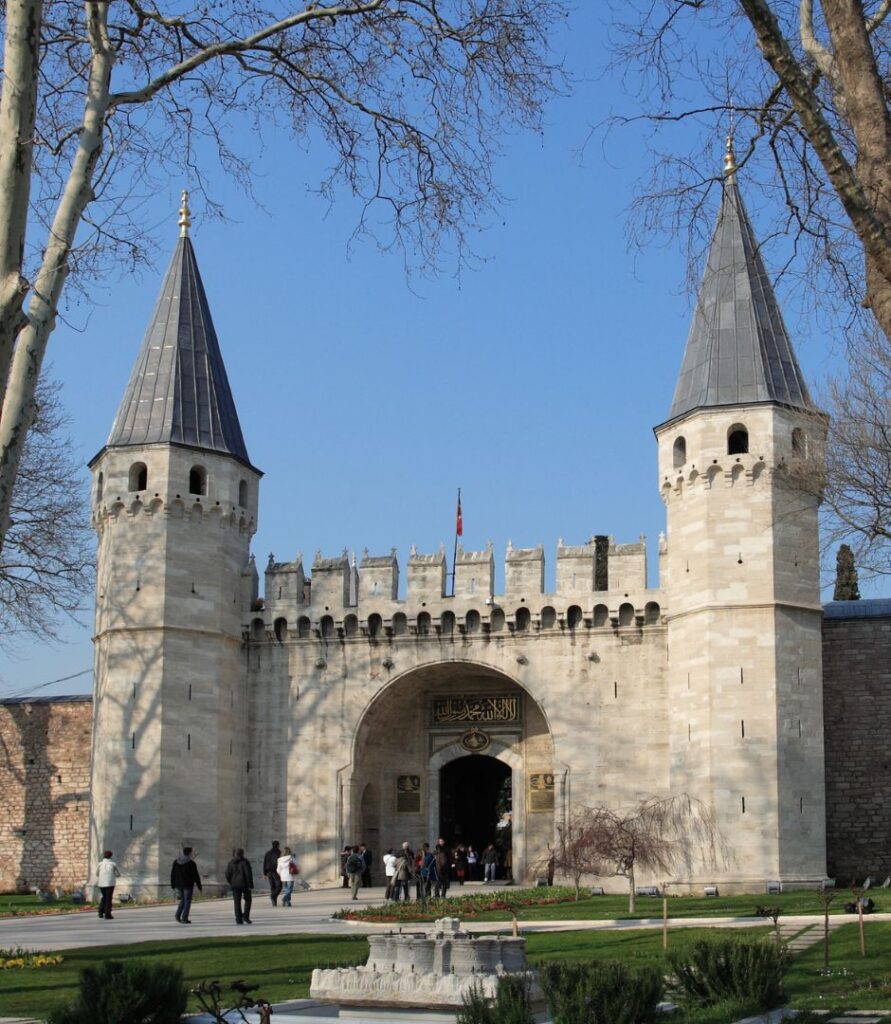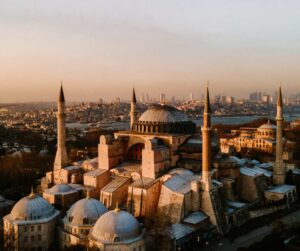The Historical Background of Hagia Sophia
Hagia Sophia, one of the most iconic landmarks in Istanbul, Turkey, stands as a testament to the rich history and architectural brilliance of the Byzantine Empire. This magnificent structure has served as a cathedral, a mosque, and now a museum, reflecting the diverse cultural and religious heritage of the region.

The Era of Emperor Justinian I
Hagia Sophia was constructed during the reign of Emperor Justinian I, who ruled the Byzantine Empire from 527 to 565 AD.
Justinian was determined to restore the glory of the Roman Empire and commissioned the building of it to symbolize the power and wealth of his reign. The construction of Hagia Sophia began in 532 AD and was completed in just five years, in 537 AD.
The Vision Behind Hagia Sophia
Emperor Justinian envisioned Hagia Sophia as the epitome of architectural and artistic achievement. He aimed to create a structure that would surpass all others in grandeur and magnificence. To realize this vision, he enlisted the talents of two renowned architects, Anthemius of Tralles and Isidore of Miletus.
The Construction of Hagia Sophia
The construction of Hagia Sophia was a monumental undertaking, requiring innovative engineering and artistic ingenuity.
The Architects and Their Genius
Anthemius of Tralles and Isidore of Miletus
Anthemius of Tralles, a mathematician and physicist, and Isidore of Miletus, a renowned engineer, were the masterminds behind it’s design. Their combined expertise in mathematics, physics, and architecture enabled them to create a structure that was both grand and innovative.
Innovative Design Elements
The architects employed groundbreaking techniques to achieve the massive dome that defines Hagia Sophia. The use of pendentives, triangular sections of masonry that transition the weight from the dome to the supporting pillars, was a revolutionary architectural solution. This allowed for a vast, open interior space without the need for numerous supporting columns.
The Building Materials

Marble and Stone
Hagia Sophia was constructed using a variety of materials sourced from different parts of the Byzantine Empire. Marble from the islands of Proconnesus and the region of Marmara, green marble from Thessaly, and yellow stone from Syria were used to create the stunning interior and exterior.
The Magnificent Dome
The central dome, measuring 31 meters in diameter and rising 55 meters above the ground, is the most striking feature of it . Covered in gold mosaics, the dome appears to float above the structure, creating a sense of ethereal beauty.
The use of lightweight bricks and the incorporation of windows around the base of the dome reduce the weight and create a halo effect with natural light streaming in.
The Transformations of Hagia Sophia
Over the centuries, Hagia Sophia has undergone several transformations, each adding to its rich history and cultural significance.
From Cathedral to Mosque

The Conquest of Constantinople
In 1453, Constantinople (now Istanbul) fell to the Ottoman Empire, led by Sultan Mehmed II. Following the conquest, Hagia Sophia was converted into a mosque, marking a new chapter in its history.
The Ottomans made several modifications to the structure, including the addition of minarets, a mihrab, and a minbar.
Architectural Modifications
The Ottomans preserved much of the original Byzantine architecture while incorporating Islamic elements. The addition of four minarets, built at different times, not only enhanced the mosque’s grandeur but also served as visual markers of the Islamic faith.
The Modern Era
Conversion to a Museum
In 1935, under the leadership of Mustafa Kemal Atatürk, the founder of the Republic of Turkey, Hagia Sophia was secularized and converted into a museum. This decision aimed to preserve the site’s historical and architectural significance and make it accessible to people of all backgrounds and beliefs.
Ongoing Restoration Efforts
Restoration efforts have been ongoing to preserve the intricate mosaics, frescoes, and architectural elements of Hagia Sophia. These efforts ensure that future generations can appreciate the splendor and historical importance of this UNESCO World Heritage site.
Architectural and Artistic Marvels of Hagia Sophia
Hagia Sophia’s architecture and artistic elements are a blend of Byzantine and Ottoman influences, creating a unique and breathtaking monument.
The Mosaics
Byzantine Mosaics
The interior of Hagia Sophia is adorned with stunning mosaics depicting religious figures and scenes. The golden mosaics of Christ Pantocrator, the Virgin Mary, and various saints are masterpieces of Byzantine art, showcasing the skill and devotion of the artists.
The Deësis Mosaic
One of the most famous mosaics in it is the Deësis mosaic, which depicts Christ flanked by the Virgin Mary and John the Baptist. This mosaic, created in the 13th century, is renowned for its emotional depth and intricate detail.
The Calligraphy

Islamic Calligraphy
Following its conversion into a mosque, it was adorned with beautiful Islamic calligraphy. Large medallions bearing the names of Allah, Muhammad, and the early caliphs were added, blending harmoniously with the existing Byzantine elements.
The Mihrab and Minbar
The mihrab, indicating the direction of Mecca, and the minbar, used for delivering sermons, are intricately designed and reflect the exquisite craftsmanship of the Ottoman period.
The Dome and Its Significance
Engineering Feats
The dome of Hagia Sophia is a marvel of engineering, representing the zenith of Byzantine architectural achievement. The use of pendentives to support the massive dome was a groundbreaking innovation that influenced the design of many subsequent structures.
Symbolism and Light
The dome’s design allows natural light to filter through the windows at its base, creating an otherworldly glow. This play of light and space symbolizes the divine and enhances the spiritual experience for visitors.
Hagia Sophia stands as a symbol of the confluence of cultures, religions, and architectural brilliance. Its journey from a cathedral to a mosque and finally to a museum encapsulates the rich and diverse history of Istanbul. Whether admired for its historical significance, architectural marvels, or artistic beauty, Hagia Sophia continues to inspire awe and reverence in all who visit it.







